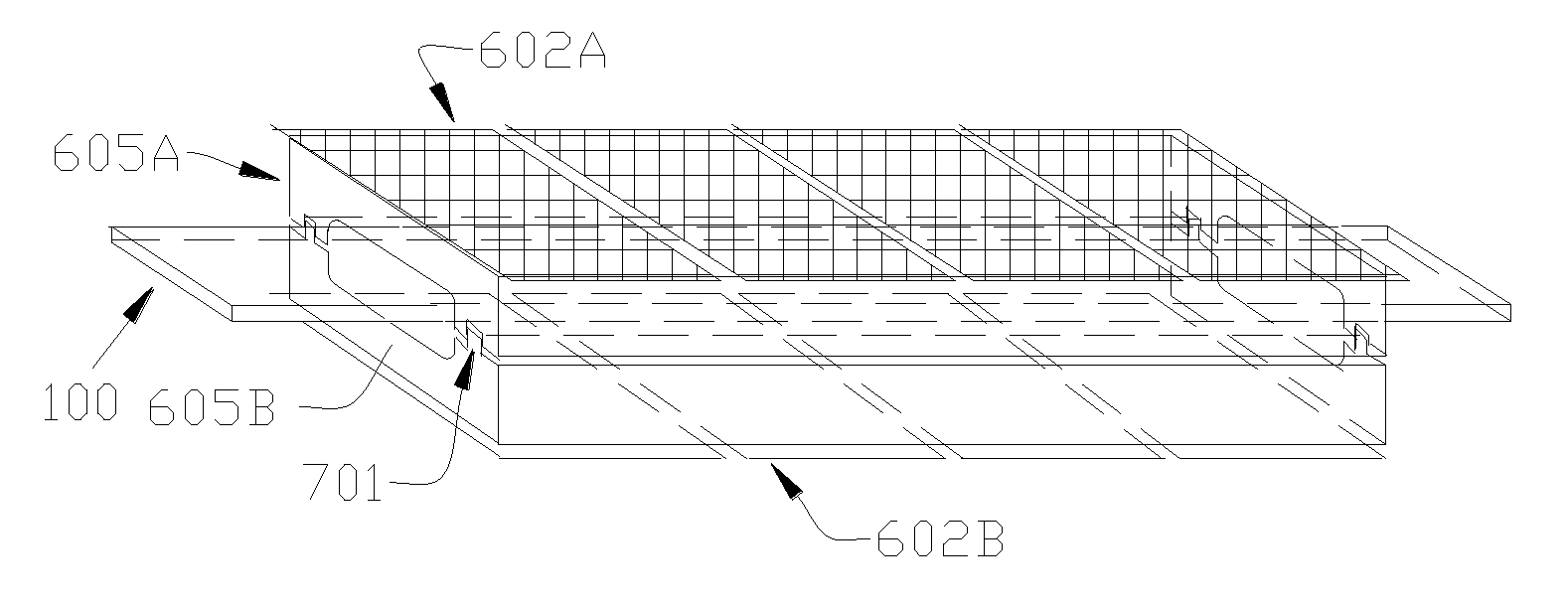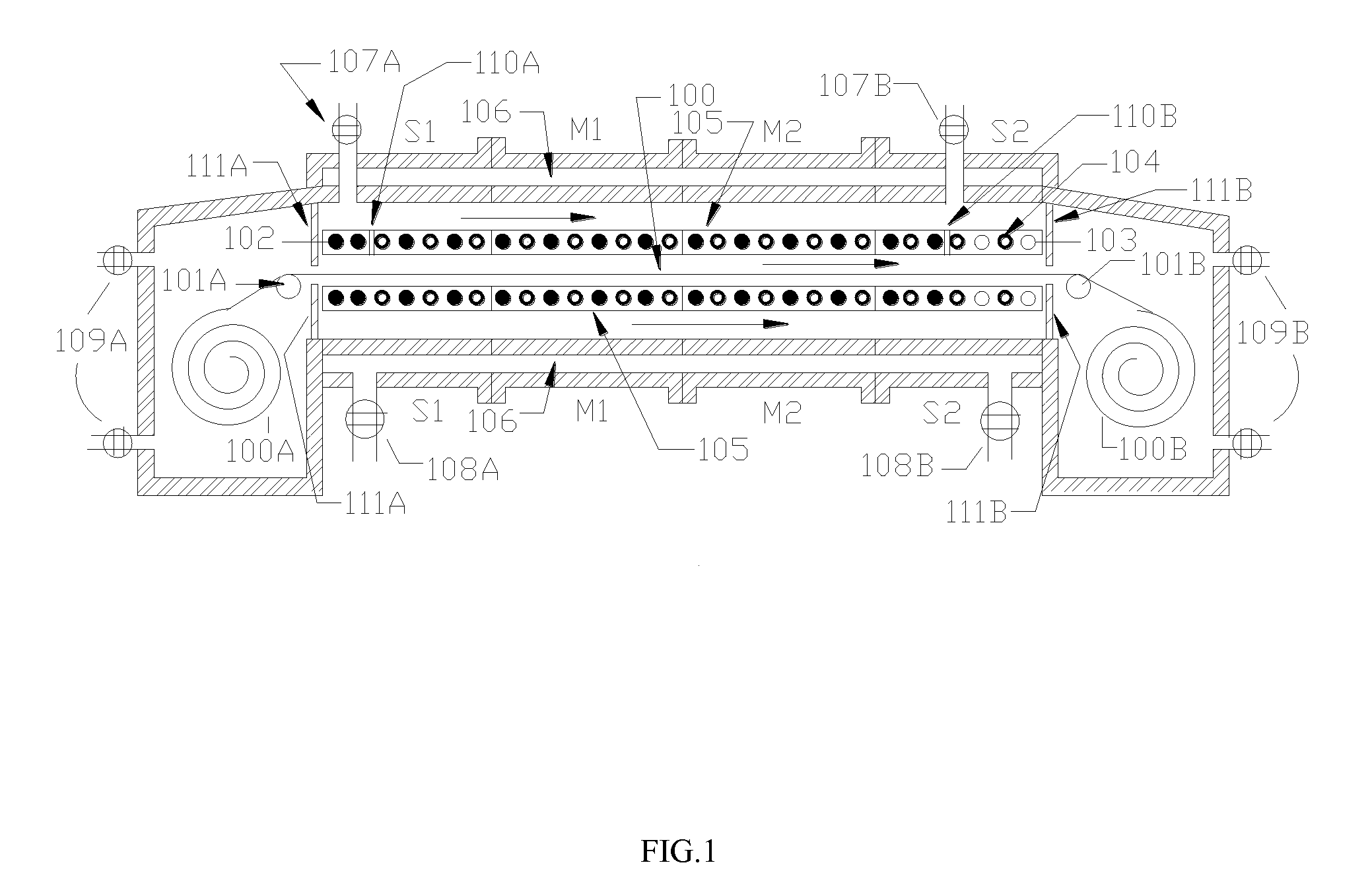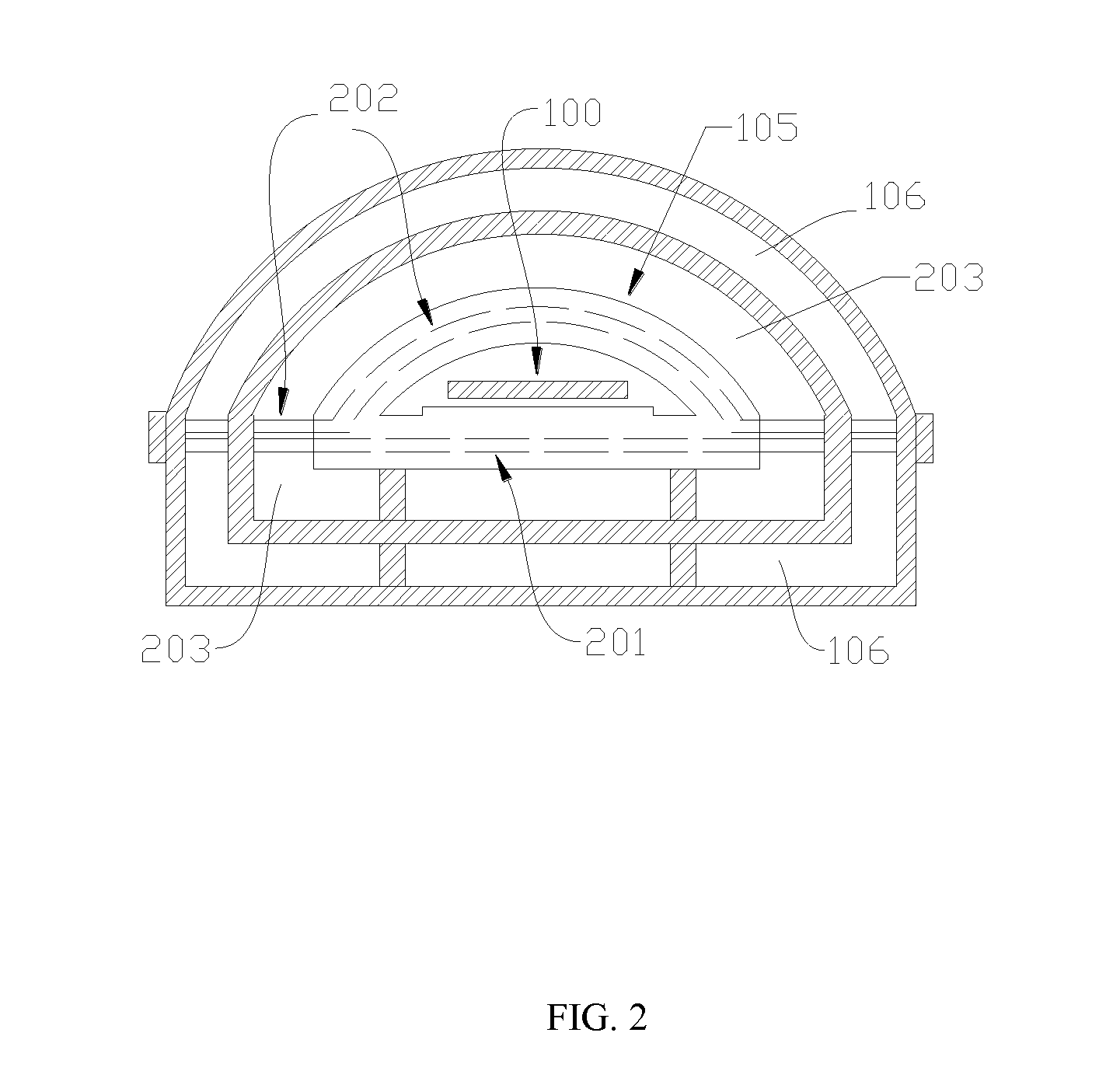Assembled Reactor for Fabrications of Thin Film Solar Cell Absorbers through Roll-to-Roll Processes
a solar cell and assembly technology, applied in furnaces, lighting and heating apparatuses, furnace types, etc., can solve the problems of cigs absorber, difficult fabrication and short supply of silicon materials, high cost of silicon materials, etc., and achieve the effect of precise temperature control
- Summary
- Abstract
- Description
- Claims
- Application Information
AI Technical Summary
Benefits of technology
Problems solved by technology
Method used
Image
Examples
example 1
Post-Treatment of a CdTe Film in CdCl2:Ar:O2 Atmosphere
[0028]A CdTe solar cell deposited on a flexible substrate can only be a substrate configuration. In this example, a stainless steel roll coated with Mo may be used as a substrate and CdTe and CdS layers can be deposited with the methods of a vacuum evaporation and a chemical bath deposition (CBD), respectively. After CdTe and CdS deposition, a CdCl2 anneal is usually required to increase the solar cell efficiency because the anneal increase the open circuit voltage Voc and the fill factor FF. Several mechanisms for these improvements have been proposed, such as the elimination of fast-recombination centers in the CdTe film, reduction of recombination centers in the junction, and the elimination of small grains at the grain boundaries.
[0029]An apparatus shown in FIG. 1 with 10 meter long oven, assembled with 10 pieces of 1 meter long modular buffer sections, may be used o anneal CdTe absorber / CdS window layers. The roll coated wi...
example 2
Selenization of a CIG Precursor Layer in H2Se / H2S Gas Atmosphere to Form CIGS Absorber
[0030]In a CIGS thin film solar cell, formation of the CIGS absorber may need several steps. In a traditional method, a CIG precursor was generated firstly through some different methods, vacuum or non-vacuum, then the CIG precursor was selenized under H2Se or H2Se / H2S atmosphere at an enhanced temperature to form a stoichiometric CIGS absorber. Because H2Se is a kind of extremely toxic gas, it has been much less used today. However, it is still used sometimes because this gas-solid selenization reaction may generate a better quality CIGS absorber.
[0031]Due to its high toxicity, H2Se is hard to prepare and store. Therefore, a H2Se gas cylinder is very expensive. A more economical H2Se gas source may be from an in-situ generation. For example, the solid Se or S can be reduced by H2 at an enhanced temperature to generate H2Se and H2S gases which can be introduced into the present apparatus for a sele...
example 3
Selenization of a CIGS Precursor Layer Under an Inert Gas Ambient
[0033]As described in Example 2, the selenization under a H2Se ambient is not common today. Commonly, the selenization is carried out in two ways. On one hand, Cu, Ga, In and Se are co-deposited and selenized, or Se is continuously supplied during a vacuum deposition of Cu, In and Ga. The selenization may have been completed during these processes. If not, the CIGS precursors may need anneal in a reactor as shown in the present invention. On the other hand, a CIGS precursor film may be constituted from multiple layers of Cu, Ga, In and Se. The different elements are not reacted during their depositions. Under this circumstance, the CIGS precursor must be reacted and selenized to form a high quality stoichiometric CIGS absorber. The present invention is well suitable for this application.
[0034]The apparatus shown in FIG. 1 and FIG. 3 are both good for the selenization reaction. Inside these equipments, the precursor lay...
PUM
 Login to View More
Login to View More Abstract
Description
Claims
Application Information
 Login to View More
Login to View More - R&D
- Intellectual Property
- Life Sciences
- Materials
- Tech Scout
- Unparalleled Data Quality
- Higher Quality Content
- 60% Fewer Hallucinations
Browse by: Latest US Patents, China's latest patents, Technical Efficacy Thesaurus, Application Domain, Technology Topic, Popular Technical Reports.
© 2025 PatSnap. All rights reserved.Legal|Privacy policy|Modern Slavery Act Transparency Statement|Sitemap|About US| Contact US: help@patsnap.com



